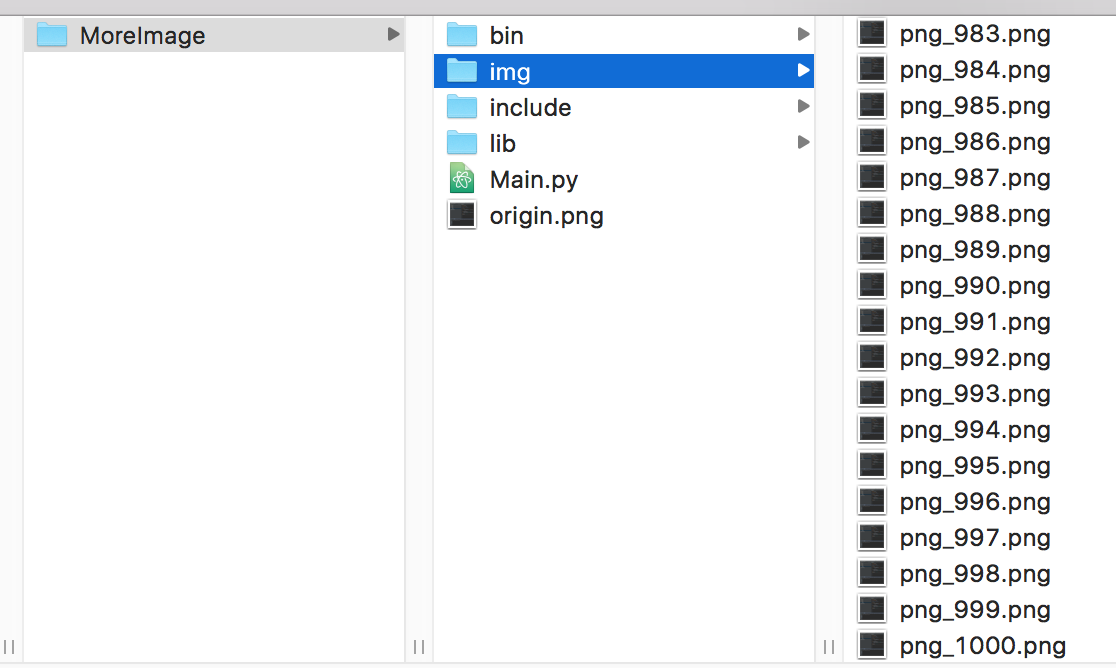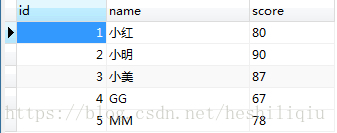Python中BeautifuSoup库的用法使用详解
BeautifulSoup简介
Beautiful Soup是python的一个库,最主要的功能是从网页抓取数据。官方解释如下:
Beautiful Soup提供一些简单的、python式的函数用来处理导航、搜索、修改分析树等功能。它是一个工具箱,通过解析文档为用户提供需要抓取的数据,因为简单,所以不需要多少代码就可以写出一个完整的应用程序。
Beautiful Soup自动将输入文档转换为Unicode编码,输出文档转换为utf-8编码。你不需要考虑编码方式,除非文档没有指定一个编码方式,这时,Beautiful Soup就不能自动识别编码方式了。然后,你仅仅需要说明一下原始编码方式就可以了。
Beautiful Soup已成为和lxml、html6lib一样出色的python解释器,为用户灵活地提供不同的解析策略或强劲的速度。
BeautifulSoup支持Python标准库中的HTML解析器,还支持一些第三方的解析器,如果我们不安装它,则 Python 会使用 Python默认的解析器,lxml 解析器更加强大,速度更快,推荐使用lxml 解析器。
1. 创建 BeautifulSoup 对象
首先导入库 bs4 lxml requests
#encoding:UTF-8 from bs4 import BeautifulSoup import lxml import requests
使用官方字符串来演示:
html = """ <html><head><title>The Dormouse's story</title></head> <body> <p class="title" name="dromouse"><b>The Dormouse's story</b></p> <p class="story">Once upon a time there were three little sisters; and their names were <a href="http://example.com/elsie" rel="external nofollow" rel="external nofollow" rel="external nofollow" rel="external nofollow" rel="external nofollow" rel="external nofollow" rel="external nofollow" rel="external nofollow" rel="external nofollow" rel="external nofollow" rel="external nofollow" rel="external nofollow" rel="external nofollow" rel="external nofollow" rel="external nofollow" rel="external nofollow" rel="external nofollow" class="sister" id="link1"><!-- Elsie --></a>, <a href="http://example.com/lacie" rel="external nofollow" rel="external nofollow" rel="external nofollow" rel="external nofollow" rel="external nofollow" rel="external nofollow" rel="external nofollow" rel="external nofollow" class="sister" id="link2">Lacie</a> and <a href="http://example.com/tillie" rel="external nofollow" rel="external nofollow" rel="external nofollow" rel="external nofollow" rel="external nofollow" rel="external nofollow" class="sister" id="link3">Tillie</a>; and they lived at the bottom of a well.</p> <p class="story">...</p> """
创建 beautifulsoup 对象:
soup = BeautifulSoup(html,'lxml') #创建 beautifulsoup 对象
还可以用本地 HTML 文件来创建对象:
soup1 = BeautifulSoup(open('index.html')) #用本地 HTML 文件来创建对象
打印一下 soup 对象的内容,格式化输出:
print soup.prettify() #打印 soup 对象的内容,格式化输出
输出结果,格式化打印出了它的内容,这个函数经常用到。
2. 四种对象
Beautiful Soup将复杂HTML文档转换成一个复杂的树形结构,每个节点都是Python对象,所有对象可以归纳为4种:
- Tag
- NavigableString
- BeautifulSoup
- Comment
(1)Tag
Tag就是 HTML 中的一个个标签,例如:
<title>The Dormouse's story</title>
用 BeautifulSoup 可以很方便地获取 Tags:
print soup.title print soup.head print soup.a print soup.p print type(soup.a)
这种方式查找的是在所有内容中的第一个符合要求的标签。
对于 Tag,它有两个重要的属性,name 和 attrs :
print soup.name
print soup.a.name
print soup.attrs
print soup.p.attrs #在这里,我们把 p 标签的所有属性打印输出了出来,得到的类型是一个字典。
print soup.p['class'] #单独获取某个属性
print soup.p.get('class') ##单独获取某个属性 跟上面一样的
可以对这些属性和内容等等进行修改:
soup.p['class']="newClass"
也可以对这个属性进行删除:
del soup.p['class']
(2)NavigableString
得到了标签的内容用 .string 即可获取标签内部的文字,例如:
print soup.p.string
来检查一下它的类型:
print type(soup.p.string) #<class 'bs4.element.NavigableString'>
可以看到它的类型是一个 NavigableString,翻译过来叫 可以遍历的字符串。
(3)BeautifulSoup
BeautifulSoup 对象表示的是一个文档的全部内容.大部分时候,可以把它当作 Tag 对象,是一个特殊的 Tag,我们可以分别获取它的类型,名称:
print type(soup.name)
#<type 'unicode'>
print soup.name
# [document]
print soup.attrs
#{} 空字典
(4)Comment
Comment 对象是一个特殊类型的 NavigableString 对象,其实输出的内容仍然不包括注释符号。我们找一个带注释的标签:
print soup.a print soup.a.string print type(soup.a.string)
运行结果如下:
<a class="sister" href="http://example.com/elsie" rel="external nofollow" rel="external nofollow" rel="external nofollow" rel="external nofollow" rel="external nofollow" rel="external nofollow" rel="external nofollow" rel="external nofollow" rel="external nofollow" rel="external nofollow" rel="external nofollow" rel="external nofollow" rel="external nofollow" rel="external nofollow" rel="external nofollow" rel="external nofollow" rel="external nofollow" id="link1"><!-- Elsie --></a> Elsie <class 'bs4.element.Comment'>
a 标签里的内容实际上是注释,但是如果我们利用 .string 来输出它的内容,我们发现它已经把注释符号去掉了,所以这可能会给我们带来不必要的麻烦。
我们打印输出下它的类型,发现它是一个 Comment 类型,所以,我们在使用前最好做一下判断,判断代码如下:
if type(soup.a.string)==bs4.element.Comment: print soup.a.string
上面的代码中,我们判断了它的类型,是否为 Comment 类型。
3. 遍历文档树
(1)直接子节点
tag 的 .content 属性可以将tag的子节点以列表的方式输出:
print soup.head.contents #运行结果: #[<title>The Dormouse's story</title>] #输出方式为列表,我们可以用列表索引来获取它的某一个元素: print soup.head.contents[0]
.children
它返回的不是一个 list,不过我们可以通过遍历获取所有子节点。我们打印输出 .children 看一下,可以发现它是一个 list 生成器对象:
print soup.head.children #运行结果: #<listiterator object at 0x7f71457f5710> #遍历一下获得里面的内容: for item in soup.body.children: print item
(2)所有子孙节点
.contents 和 .children 属性仅包含tag的直接子节点,.descendants 属性可以对所有tag的子孙节点进行递归循环,和 children类似,要获取其中的内容,我们需要对其进行遍历:
for item in soup.descendants: print item #查看运行结果,可以发现,所有的节点都被打印出来了: #<html><head><title>The Dormouse's story</title></head> #<body> #<p class="title" name="dromouse"><b>The Dormouse's story</b></p> #<p class="story">Once upon a time there were three little sisters; and their names were #<a class="sister" href="http://example.com/elsie" rel="external nofollow" rel="external nofollow" rel="external nofollow" rel="external nofollow" rel="external nofollow" rel="external nofollow" rel="external nofollow" rel="external nofollow" rel="external nofollow" rel="external nofollow" rel="external nofollow" rel="external nofollow" rel="external nofollow" rel="external nofollow" rel="external nofollow" rel="external nofollow" rel="external nofollow" id="link1"><!-- Elsie --></a>,
(3)节点内容
如果一个标签里面没有标签了,那么 .string 就会返回标签里面的内容。如果标签里面只有唯一的一个标签了,那么 .string 也会返回最里面的内容:
print soup.head.string #运行结果: #The Dormouse's story #第二种情况: print soup.title.string #运行结果: #The Dormouse's story
如果tag包含了多个子节点,tag就无法确定,string 方法应该调用哪个子节点的内容, .string 的输出结果是 None:
print soup.html.string #运行结果: #None
(4)多个内容
.strings 获取多个内容,不过需要遍历获取,比如下面的例子:
for string in soup.strings: print(repr(string))
输出的字符串中可能包含了很多空格或空行,使用 .stripped_strings 可以去除多余空白内容:
for string in soup.stripped_strings: print(repr(string))
(5)父节点
p = soup.p print p.parent.name #运行结果: #body content = soup.head.title.string print content.parent.name #运行结果: #title
(6)全部父节点
通过元素的 .parents 属性可以递归得到元素的所有父辈节点:
content = soup.head.title.string for parent in content.parents: print parent.name
(7)兄弟节点
兄弟节点可以理解为和本节点处在统一级的节点,.next_sibling 属性获取了该节点的下一个兄弟节点,.previous_sibling 属性获取了该节点的上一个兄弟节点,如果节点不存在,则返回 None
注意:实际文档中的tag的 .next_sibling 和 .previous_sibling 属性通常是字符串或空白,因为空白或者换行也可以被视作一个节点,所以得到的结果可能是空白或者换行。
print soup.p.next_sibling # 实际该处为空白 print soup.p.prev_sibling #None 没有前一个兄弟节点,返回 None print soup.p.next_sibling.next_sibling
(8)全部兄弟节点
通过 .next_siblings 和 .previous_siblings 属性可以对当前节点的兄弟节点迭代输出:
for sibling in soup.a.next_siblings: print(repr(sibling))
(9)前后节点
与 .next_sibling .previous_sibling 不同,它并不是针对于兄弟节点,而是在所有节点,不分层次
#比如head节点为: <head><title>The Dormouse's story</title></head> #那么它的下一个节点便是 title,它是不分层次关系的。 print soup.head.next_element #<title>The Dormouse's story</title>
(10)所有前后节点
通过 .next_elements 和 .previous_elements 的迭代器就可以向前或向后访问文档的解析内容:
for element in last_a_tag.next_elements: print(repr(element))
4. 搜索文档树
(1)find_all( name , attrs , recursive , text , **kwargs )
find_all() 方法搜索当前tag的所有tag子节点,并判断是否符合过滤器的条件
name 参数
A.传字符串
name 参数可以查找所有名字为 name 的tag,字符串对象会被自动忽略掉
最简单的过滤器是字符串.在搜索方法中传入一个字符串参数,Beautiful Soup会查找与字符串完整匹配的内容,下面的例子用于查找文档中所有的<b>标签:
soup.find_all('b')
# [<b>The Dormouse's story</b>]
B.传正则表达式
如果传入正则表达式作为参数,Beautiful Soup会通过正则表达式的 match() 来匹配内容.下面例子中找出所有以b开头的标签,这表示<body>和<b>标签都应该被找到
import re
for tag in soup.find_all(re.compile("^b")):
print(tag.name)
# body
# b
C.传列表
如果传入列表参数,Beautiful Soup会将与列表中任一元素匹配的内容返回.下面代码找到文档中所有<a>标签和<b>标签:
soup.find_all(["a", "b"]) # [<b>The Dormouse's story</b>, # <a class="sister" href="http://example.com/elsie" rel="external nofollow" rel="external nofollow" rel="external nofollow" rel="external nofollow" rel="external nofollow" rel="external nofollow" rel="external nofollow" rel="external nofollow" rel="external nofollow" rel="external nofollow" rel="external nofollow" rel="external nofollow" rel="external nofollow" rel="external nofollow" rel="external nofollow" rel="external nofollow" rel="external nofollow" id="link1">Elsie</a>, # <a class="sister" href="http://example.com/lacie" rel="external nofollow" rel="external nofollow" rel="external nofollow" rel="external nofollow" rel="external nofollow" rel="external nofollow" rel="external nofollow" rel="external nofollow" id="link2">Lacie</a>, # <a class="sister" href="http://example.com/tillie" rel="external nofollow" rel="external nofollow" rel="external nofollow" rel="external nofollow" rel="external nofollow" rel="external nofollow" id="link3">Tillie</a>]
D.传 True
True 可以匹配任何值,下面代码查找到所有的tag,但是不会返回字符串节点:
for tag in soup.find_all(True): print(tag.name) # html # head # title # body # p # b # p # a # a
E.传方法
如果没有合适过滤器,那么还可以定义一个方法,方法只接受一个元素参数 ,如果这个方法返回 True 表示当前元素匹配并且被找到,如果不是则反回 False。下面方法校验了当前元素,如果包含 class 属性却不包含 id 属性,那么将返回 True:
def has_class_but_no_id(tag):
return tag.has_attr('class') and not tag.has_attr('id')
将这个方法作为参数传入 find_all() 方法,将得到所有<p>标签:
soup.find_all(has_class_but_no_id) # [<p class="title"><b>The Dormouse's story</b></p>, # <p class="story">Once upon a time there were...</p>, # <p class="story">...</p>]
2)keyword 参数
如果一个指定名字的参数不是搜索内置的参数名,搜索时会把该参数当作指定名字tag的属性来搜索,如果包含一个名字为 id 的参数,Beautiful Soup会搜索每个tag的”id”属性:
soup.find_all(id='link2') # [<a class="sister" href="http://example.com/lacie" rel="external nofollow" rel="external nofollow" rel="external nofollow" rel="external nofollow" rel="external nofollow" rel="external nofollow" rel="external nofollow" rel="external nofollow" id="link2">Lacie</a>]
如果传入 href 参数,Beautiful Soup会搜索每个tag的”href”属性:
soup.find_all(href=re.compile("elsie"))
# [<a class="sister" href="http://example.com/elsie" rel="external nofollow" rel="external nofollow" rel="external nofollow" rel="external nofollow" rel="external nofollow" rel="external nofollow" rel="external nofollow" rel="external nofollow" rel="external nofollow" rel="external nofollow" rel="external nofollow" rel="external nofollow" rel="external nofollow" rel="external nofollow" rel="external nofollow" rel="external nofollow" rel="external nofollow" id="link1">Elsie</a>]
使用多个指定名字的参数可以同时过滤tag的多个属性:
soup.find_all(href=re.compile("elsie"), id='link1')
# [<a class="sister" href="http://example.com/elsie" rel="external nofollow" rel="external nofollow" rel="external nofollow" rel="external nofollow" rel="external nofollow" rel="external nofollow" rel="external nofollow" rel="external nofollow" rel="external nofollow" rel="external nofollow" rel="external nofollow" rel="external nofollow" rel="external nofollow" rel="external nofollow" rel="external nofollow" rel="external nofollow" rel="external nofollow" id="link1">three</a>]
在这里我们想用 class 过滤,不过 class 是 python 的关键词,这怎么办?加个下划线就可以:
soup.find_all("a", class_="sister")
# [<a class="sister" href="http://example.com/elsie" rel="external nofollow" rel="external nofollow" rel="external nofollow" rel="external nofollow" rel="external nofollow" rel="external nofollow" rel="external nofollow" rel="external nofollow" rel="external nofollow" rel="external nofollow" rel="external nofollow" rel="external nofollow" rel="external nofollow" rel="external nofollow" rel="external nofollow" rel="external nofollow" rel="external nofollow" id="link1">Elsie</a>,
# <a class="sister" href="http://example.com/lacie" rel="external nofollow" rel="external nofollow" rel="external nofollow" rel="external nofollow" rel="external nofollow" rel="external nofollow" rel="external nofollow" rel="external nofollow" id="link2">Lacie</a>,
# <a class="sister" href="http://example.com/tillie" rel="external nofollow" rel="external nofollow" rel="external nofollow" rel="external nofollow" rel="external nofollow" rel="external nofollow" id="link3">Tillie</a>]
有些tag属性在搜索不能使用,比如HTML5中的 data-* 属性:
data_soup = BeautifulSoup('<div data-foo="value">foo!</div>')
data_soup.find_all(data-foo="value")
# SyntaxError: keyword can't be an expression
可以通过 find_all() 方法的 attrs 参数定义一个字典参数来搜索包含特殊属性的tag:
data_soup.find_all(attrs={"data-foo": "value"})
# [<div data-foo="value">foo!</div>]
3)text 参数
通过 text 参数可以搜搜文档中的字符串内容.与 name 参数的可选值一样, text 参数接受 字符串 , 正则表达式 , 列表, True:
soup.find_all(text="Elsie")
# [u'Elsie']
soup.find_all(text=["Tillie", "Elsie", "Lacie"])
# [u'Elsie', u'Lacie', u'Tillie']
soup.find_all(text=re.compile("Dormouse"))
[u"The Dormouse's story", u"The Dormouse's story"]
4)limit 参数
find_all() 方法返回全部的搜索结构,如果文档树很大那么搜索会很慢.如果我们不需要全部结果,可以使用 limit 参数限制返回结果的数量.效果与SQL中的limit关键字类似,当搜索到的结果数量达到 limit 的限制时,就停止搜索返回结果.
文档树中有3个tag符合搜索条件,但结果只返回了2个,因为我们限制了返回数量:
soup.find_all("a", limit=2)
# [<a class="sister" href="http://example.com/elsie" rel="external nofollow" rel="external nofollow" rel="external nofollow" rel="external nofollow" rel="external nofollow" rel="external nofollow" rel="external nofollow" rel="external nofollow" rel="external nofollow" rel="external nofollow" rel="external nofollow" rel="external nofollow" rel="external nofollow" rel="external nofollow" rel="external nofollow" rel="external nofollow" rel="external nofollow" id="link1">Elsie</a>,
# <a class="sister" href="http://example.com/lacie" rel="external nofollow" rel="external nofollow" rel="external nofollow" rel="external nofollow" rel="external nofollow" rel="external nofollow" rel="external nofollow" rel="external nofollow" id="link2">Lacie</a>]
5)recursive 参数
调用tag的 find_all() 方法时,Beautiful Soup会检索当前tag的所有子孙节点,如果只想搜索tag的直接子节点,可以使用参数 recursive=False:
soup.html.find_all("title")
# [<title>The Dormouse's story</title>]
soup.html.find_all("title", recursive=False)
(2)find( name , attrs , recursive , text , **kwargs )
它与 find_all() 方法唯一的区别是 find_all() 方法的返回结果是值包含一个元素的列表,而 find() 方法直接返回结果
(3)find_parents() find_parent()
find_all() 和 find() 只搜索当前节点的所有子节点,孙子节点等. find_parents() 和 find_parent() 用来搜索当前节点的父辈节点,搜索方法与普通tag的搜索方法相同,搜索文档搜索文档包含的内容
(4)find_next_siblings() find_next_sibling()
这2个方法通过 .next_siblings 属性对当 tag 的所有后面解析的兄弟 tag 节点进行迭代, find_next_siblings() 方法返回所有符合条件的后面的兄弟节点,find_next_sibling() 只返回符合条件的后面的第一个tag节点
(5)find_previous_siblings() find_previous_sibling()
这2个方法通过 .previous_siblings 属性对当前 tag 的前面解析的兄弟 tag 节点进行迭代, find_previous_siblings()方法返回所有符合条件的前面的兄弟节点, find_previous_sibling() 方法返回第一个符合条件的前面的兄弟节点
(6)find_all_next() find_next()
这2个方法通过 .next_elements 属性对当前 tag 的之后的 tag 和字符串进行迭代, find_all_next() 方法返回所有符合条件的节点, find_next() 方法返回第一个符合条件的节点
(7)find_all_previous() 和 find_previous()
这2个方法通过 .previous_elements 属性对当前节点前面的 tag 和字符串进行迭代, find_all_previous() 方法返回所有符合条件的节点, find_previous()方法返回第一个符合条件的节点
注:以上(2)(3)(4)(5)(6)(7)方法参数用法与 find_all() 完全相同,原理均类似。
5. CSS选择器
我们在写 CSS 时,标签名不加任何修饰,类名前加点,id名前加 #,在这里我们也可以利用类似的方法来筛选元素,用到的方法是 soup.select(),返回类型是 list
(1)通过标签名查找
print soup.select('title')
#[<title>The Dormouse's story</title>]
print soup.select('a')
#[<a class="sister" href="http://example.com/elsie" rel="external nofollow" rel="external nofollow" rel="external nofollow" rel="external nofollow" rel="external nofollow" rel="external nofollow" rel="external nofollow" rel="external nofollow" rel="external nofollow" rel="external nofollow" rel="external nofollow" rel="external nofollow" rel="external nofollow" rel="external nofollow" rel="external nofollow" rel="external nofollow" rel="external nofollow" id="link1"><!-- Elsie --></a>, <a class="sister" href="http://example.com/lacie" rel="external nofollow" rel="external nofollow" rel="external nofollow" rel="external nofollow" rel="external nofollow" rel="external nofollow" rel="external nofollow" rel="external nofollow" id="link2">Lacie</a>, <a class="sister" href="http://example.com/tillie" rel="external nofollow" rel="external nofollow" rel="external nofollow" rel="external nofollow" rel="external nofollow" rel="external nofollow" id="link3">Tillie</a>]
(2)通过类名查找
print soup.select('.sister')
#[<a class="sister" href="http://example.com/elsie" rel="external nofollow" rel="external nofollow" rel="external nofollow" rel="external nofollow" rel="external nofollow" rel="external nofollow" rel="external nofollow" rel="external nofollow" rel="external nofollow" rel="external nofollow" rel="external nofollow" rel="external nofollow" rel="external nofollow" rel="external nofollow" rel="external nofollow" rel="external nofollow" rel="external nofollow" id="link1"><!-- Elsie --></a>, <a class="sister" href="http://example.com/lacie" rel="external nofollow" rel="external nofollow" rel="external nofollow" rel="external nofollow" rel="external nofollow" rel="external nofollow" rel="external nofollow" rel="external nofollow" id="link2">Lacie</a>, <a class="sister" href="http://example.com/tillie" rel="external nofollow" rel="external nofollow" rel="external nofollow" rel="external nofollow" rel="external nofollow" rel="external nofollow" id="link3">Tillie</a>]
(3)通过 id 名查找
print soup.select('#link1')
#[<a class="sister" href="http://example.com/elsie" rel="external nofollow" rel="external nofollow" rel="external nofollow" rel="external nofollow" rel="external nofollow" rel="external nofollow" rel="external nofollow" rel="external nofollow" rel="external nofollow" rel="external nofollow" rel="external nofollow" rel="external nofollow" rel="external nofollow" rel="external nofollow" rel="external nofollow" rel="external nofollow" rel="external nofollow" id="link1"><!-- Elsie --></a>]
(4)组合查找
组合查找即和写 class 文件时,标签名与类名、id名进行的组合原理是一样的,例如查找 p 标签中,id 等于 link1的内容,二者需要用空格分开:
print soup.select('p #link1')
#[<a class="sister" href="http://example.com/elsie" rel="external nofollow" rel="external nofollow" rel="external nofollow" rel="external nofollow" rel="external nofollow" rel="external nofollow" rel="external nofollow" rel="external nofollow" rel="external nofollow" rel="external nofollow" rel="external nofollow" rel="external nofollow" rel="external nofollow" rel="external nofollow" rel="external nofollow" rel="external nofollow" rel="external nofollow" id="link1"><!-- Elsie --></a>]
直接子标签查找:
print soup.select("head > title")
#[<title>The Dormouse's story</title>]
(5)属性查找
查找时还可以加入属性元素,属性需要用中括号括起来,注意属性和标签属于同一节点,所以中间不能加空格,否则会无法匹配到:
print soup.select('a[class="sister"]')
#[<a class="sister" href="http://example.com/elsie" rel="external nofollow" rel="external nofollow" rel="external nofollow" rel="external nofollow" rel="external nofollow" rel="external nofollow" rel="external nofollow" rel="external nofollow" rel="external nofollow" rel="external nofollow" rel="external nofollow" rel="external nofollow" rel="external nofollow" rel="external nofollow" rel="external nofollow" rel="external nofollow" rel="external nofollow" id="link1"><!-- Elsie --></a>, <a class="sister" href="http://example.com/lacie" rel="external nofollow" rel="external nofollow" rel="external nofollow" rel="external nofollow" rel="external nofollow" rel="external nofollow" rel="external nofollow" rel="external nofollow" id="link2">Lacie</a>, <a class="sister" href="http://example.com/tillie" rel="external nofollow" rel="external nofollow" rel="external nofollow" rel="external nofollow" rel="external nofollow" rel="external nofollow" id="link3">Tillie</a>]
print soup.select('a[href="http://example.com/elsie" rel="external nofollow" rel="external nofollow" rel="external nofollow" rel="external nofollow" rel="external nofollow" rel="external nofollow" rel="external nofollow" rel="external nofollow" rel="external nofollow" rel="external nofollow" rel="external nofollow" rel="external nofollow" rel="external nofollow" rel="external nofollow" rel="external nofollow" rel="external nofollow" rel="external nofollow" ]')
#[<a class="sister" href="http://example.com/elsie" rel="external nofollow" rel="external nofollow" rel="external nofollow" rel="external nofollow" rel="external nofollow" rel="external nofollow" rel="external nofollow" rel="external nofollow" rel="external nofollow" rel="external nofollow" rel="external nofollow" rel="external nofollow" rel="external nofollow" rel="external nofollow" rel="external nofollow" rel="external nofollow" rel="external nofollow" id="link1"><!-- Elsie --></a>]
#属性也可以与上述查找方式组合,不在同一节点的空格隔开,同一节点的不加空格:
print soup.select('p a[href="http://example.com/elsie" rel="external nofollow" rel="external nofollow" rel="external nofollow" rel="external nofollow" rel="external nofollow" rel="external nofollow" rel="external nofollow" rel="external nofollow" rel="external nofollow" rel="external nofollow" rel="external nofollow" rel="external nofollow" rel="external nofollow" rel="external nofollow" rel="external nofollow" rel="external nofollow" rel="external nofollow" ]')
#[<a class="sister" href="http://example.com/elsie" rel="external nofollow" rel="external nofollow" rel="external nofollow" rel="external nofollow" rel="external nofollow" rel="external nofollow" rel="external nofollow" rel="external nofollow" rel="external nofollow" rel="external nofollow" rel="external nofollow" rel="external nofollow" rel="external nofollow" rel="external nofollow" rel="external nofollow" rel="external nofollow" rel="external nofollow" id="link1"><!-- Elsie --></a>]
#以上的 select 方法返回的结果都是列表形式,可以遍历形式输出,然后用 get_text() 方法来获取它的内容:
soup = BeautifulSoup(html, 'lxml')
print type(soup.select('title'))
print soup.select('title')[0].get_text()
for title in soup.select('title'):
print title.get_text()
find_all和select的区别
find_all()对于属性的值不是精确匹配的,是模糊匹配。同样的,find()也是模糊匹配
select()方法使用css定位元素,根据td标签和class属性值 精确定位,但是会查询出来所有符合条件的元素,返回一个列表
更详细的内容查看官方文档:http://beautifulsoup.readthedocs.io/zh_CN/latest/
以上就是本文的全部内容,希望对大家的学习有所帮助,也希望大家多多支持【听图阁-专注于Python设计】。


